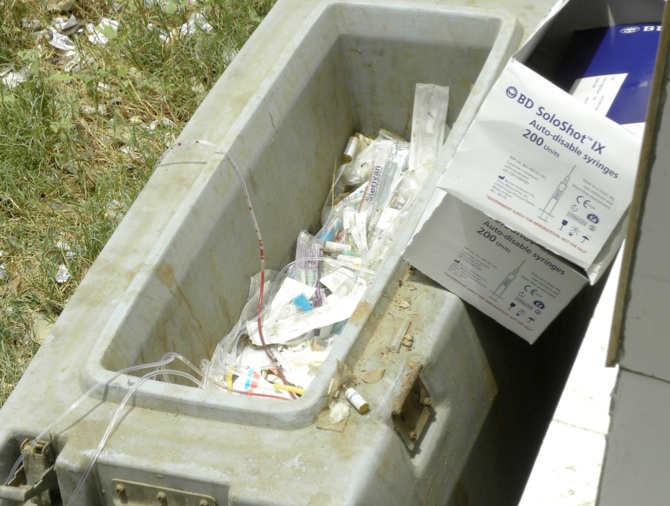Courtney Schuster
Special Contributor, Blog Entry #3
My most recent adventure was being assigned to a fact-finding team that was given the assignment of inspecting rural health facilities. We were sent to the very rural, and very poor state of Bihar to examine how health facilities complied with the National Rural Health Mission (NRHM) standards. The federal government instituted the NRHM in 2006. It set the standards for care and operations at government health facilities. Additionally, it established dozens of requirements for health facilities including: the number of staff that should be at a facility at any given time; drugs that should be present; the number of beds each facility should have; and basic medical hygiene that should be provided.
The fact-finding team spent a week in Bihar traveling to five districts and looking at twenty-five different health facilities. The medical equipment and beds that these facilities had were mostly old and very rusted. In every single facility we visited, there were numerous concerns that went far beyond the superficial issues like rusting bed frames.

First, every facility had a layer of dirt on the floor. Government facilities cannot afford to have air conditioning so they depend on windows and fans to cool the place. Unfortunately, open doors and windows also mean that the dust and dirt get in and covers every surface. There are no regular cleaning staff employed at any of the facilities, save the few large district hospitals; and even in those, the method of cleaning is simply sweeping with a grass broom, which is ineffective and unsanitary.
Second, poor cleanliness of supplies, bedding, and buildings is prevalent. In every room, of every facility, the floors, and often times walls, were covered in old blood stains. Sheets were also old and stained. There were beds and operating tables without any sheets at all. Medical supplies were not sterilized between uses. Many of the larger health facilities had running water but none had the means to heat water or an autoclave. A majority of the facilities we saw in rural areas did not even have running water.

Third, unsafe medical waste disposal and poor garbage disposal was the norm. Inside the facilities, used medical supplies littered the floors. Medical waste, including blood and fluids, from births and operations were not disposed of in a proper or timely manner. Most facilities threw delivery fluids, like after birth and the placenta, out the window. At one center, a birth had taken place five hours before our arrival. As we began our tour, that delivery room was still waiting to be cleaned.
The perimeter of each facility was much worse. Every one we visited had garbage covering the lawns. There were water drainage ditches outside buildings full of garbage, medical waste, and sometimes even human waste. The more rural and remote health facilities had animal feces from cattle, goats, and sheep on the ground outside and on the steps leading into the building. Old vials, used needles, blood soaked material, used gloves, and plastic packaging were littered everywhere. Many facilities had people, including children, waiting outside right next to the medical waste.

I left Bihar stunned and dismayed at the unsanitary conditions and poor management of every health facility we visited. None of them were consistent with the NRHM standards and it became clear to me why India continue to struggles with high maternal mortality rates.
Courtney Schuster is a third-year student at Syracuse University College of Law. She is currently working as an intern in India for the summer. She will be contributing personal blog entries throughout her internship, documenting the challenges of solving human rights issues in international settings.